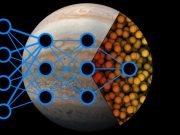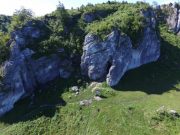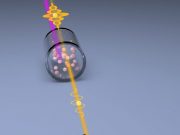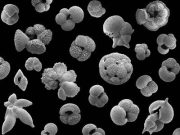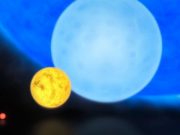Physicists use classical concepts to decipher strange quantum behaviors in an ultracold gas
There they were, in all their weird quantum glory: ultracold lithium atoms in the optical trap operated by UC Santa Barbara undergraduate student Alec...
Sound waves replace human hands in petri dish experiments
Mechanical engineers at Duke University have demonstrated a set of prototypes for manipulating particles and cells in a Petri dish using sound waves. The...
AI used to show how hydrogen becomes a metal inside giant planets
Dense metallic hydrogen—a phase of hydrogen which behaves like an electrical conductor—makes up the interior of giant planets, but it is difficult to study...
Massive halo finally explains stream of gas swirling around the Milky Way
The Milky Way is not alone in its neighborhood. It has captured smaller galaxies in its orbit, and the two largest are known as...
Researchers design system to visualize objects through clouds and fog
Like a comic book come to life, researchers at Stanford University have developed a kind of X-ray vision—only without the X-rays. Working with hardware...
The oldest Neanderthal DNA of Central-Eastern Europe
Around 100,000 years ago, the climate changed abruptly and the environment of Central-Eastern Europe shifted from forested to open steppe/taiga habitat, promoting the dispersal...
Quantum light squeezes the noise out of microscopy signals
Researchers at the Department of Energy's Oak Ridge National Laboratory used quantum optics to advance state-of-the-art microscopy and illuminate a path to detecting material...
Australian telescope finds no signs of alien technology in 10 million star systems
A radio telescope in outback Western Australia has completed the deepest and broadest search at low frequencies for alien technologies, scanning a patch of...
The mathematical values of Linear A fraction signs
A recent study by a team based at the University of Bologna, published in the Journal of Archeological Science, has shed new light on the...
Study analyzes the impact of carbon dioxide on Earth’s climate 30 million years ago
One way to make better predictions of global warming in the coming centuries is to look at climate change in the geological past.
In research...
METISSE offers new insights into the lives of massive stars
Massive stars are those larger than about 10 times the mass of the sun and are born far less often than their low-mass counterparts....




